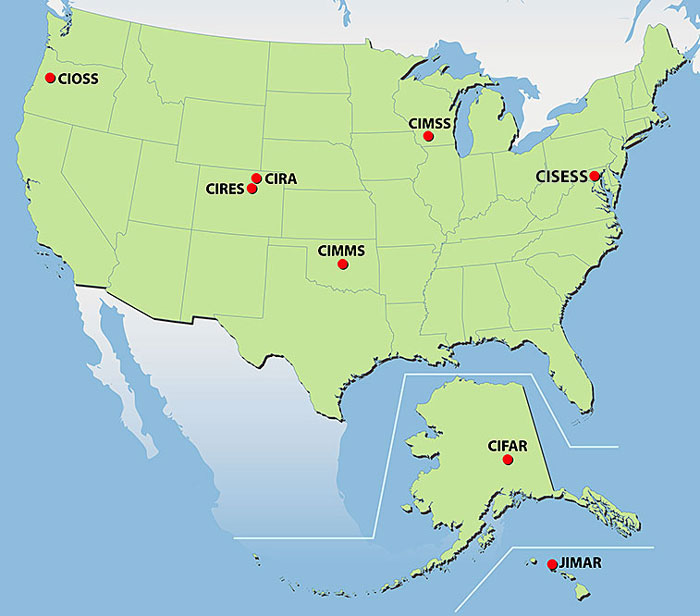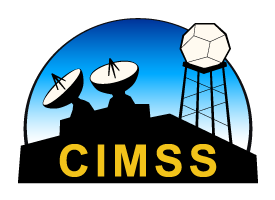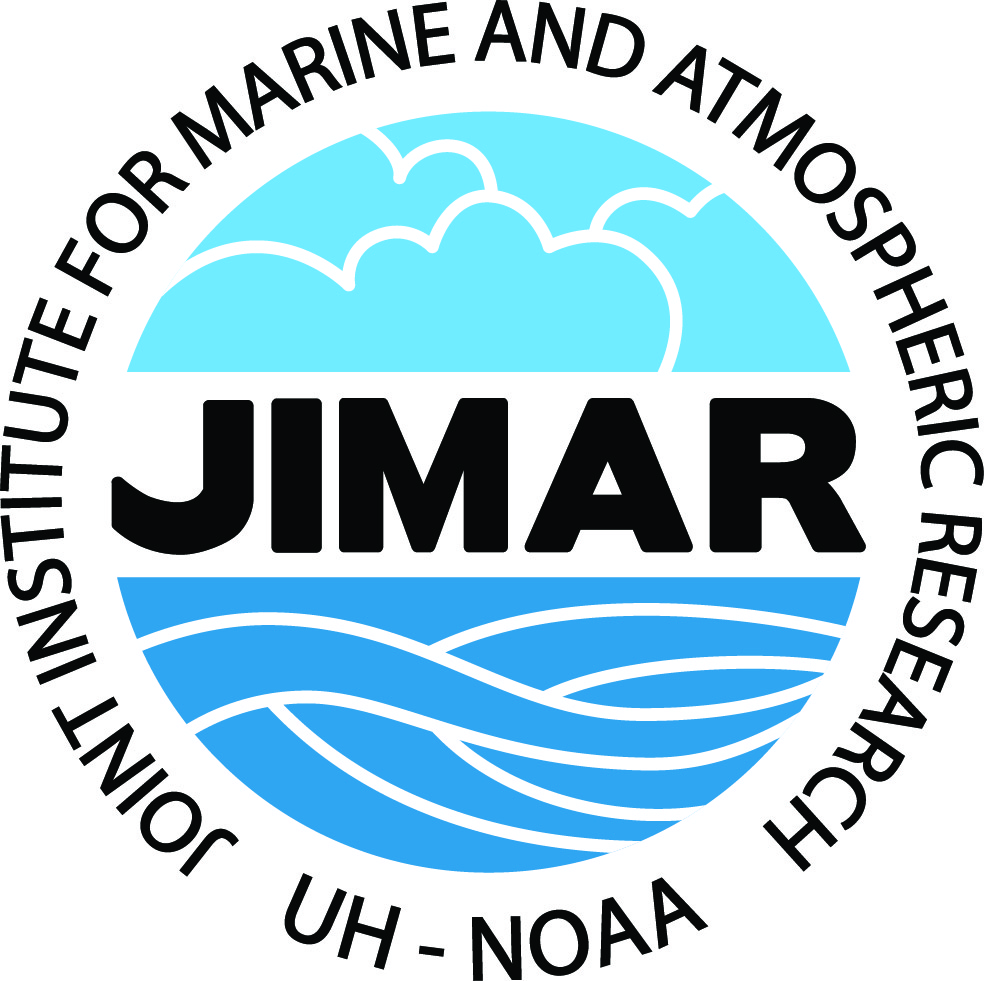Proving Ground: Cooperative Institutes

Cooperative Institutes (CIs) are non-federal academic and non-profit research institutions supported by the National Oceanic and Atmospheric Association (NOAA) that provide resources that support NOAA mission goals and strategic plans.
Eight NOAA Cooperative Institutes support the GOES-R Series Program. Information for each Institute follows the map below:
Cooperative Institute for Satellite Earth System Studies (CISESS)
The Cooperative Institute for Satellite Earth System Studies (CISESS), with locations in at the University of Maryland College Park, and North Carolina State University, engages in collaborative and transformative research activities with NOAA scientists to enhance NOAA’s ability to generate and use satellite and in situ observations and Earth System models to meet that challenge, advance NOAA’s science mission, and identify emerging science needs that will effectively contribute to meeting NOAA’s mission in the future.
Cooperative Institute for Alaska Research (CIFAR)
The Cooperative Institute for Alaska Research (CIFAR) at the University of Alaska, Fairbanks, conducts ecosystem and environmental research related to Alaska and its associated Arctic regions, including the Gulf of Alaska, Bering Sea, Chukchi/Beaufort Seas, and Arctic Ocean.
Cooperative Institute for Mesoscale Meteorological Studies (CIMMS)
The Cooperative Institute for Mesoscale Meteorological Studies (CIMMS) at the University of Oklahoma (OU) promotes collaborative research between NOAA and OU scientists on mesoscale dynamics, radar research, development, and analysis, atmospheric electricity, severe storms, cloud microphysics, and boundary layer studies, with increasing emphasis in recent years on the climatic effects of/controls on mesoscale processes, the socioeconomic impact of such phenomena, and climate change monitoring and detection.
Cooperative Institute for Meteorological Satellite Studies (CIMSS)
The Cooperative Institute for Meteorological Satellite Studies (CIMSS) at the University of Wisconsin, Madison, collaborates with NOAA in the specification, testing, and evaluation of new satellite instruments; in the development of techniques to derive and apply meteorological parameters from the available satellite measurements; and in the assessment of the impact of new remote sensing data and products on weather analyses and forecasts and as long-term climate data records.
Cooperative Institute for Oceanographic Satellite Studies (CIOSS)
The Cooperative Institute for Oceanographic Satellite Studies (CIOSS), located at Oregon State University, collaborates with NOAA research scientists to enhance and improve the use of satellite remote sensing for oceanographic research, operational applications and education/outreach.
Cooperative Institute for Research in the Atmosphere (CIRA)
The Cooperative Institute for Research in the Atmosphere (CIRA) at Colorado State University in Ft. Collins, Colorado, serves NOAA in the areas of research, development, transition, education and outreach. CIRA research is building prototype products and developing training, based on the new sensor technology, to assure maximum exploitation of GOES-R data when the satellites are launched.
Cooperative Institute for Research in Environmental Sciences (CIRES)
The Cooperative Institute for Research in Environmental Sciences (CIRES) at the University of Colorado at Boulder explores all aspects of the Earth system and searches for ways to better understand how natural and human-made disturbances impact our dynamic planet.
Joint Institute for Marine and Atmospheric Research (JIMAR)
The Joint Institute for Marine and Atmospheric Research (JIMAR), located at the University of Hawaii in Honolulu focuses on research in ecosystem forecasting, ecosystem monitoring, ecosystem-based management, protection and restoration of resources, equatorial oceanography, climate research and impacts, tropical meteorology, and tsunami and other long-period ocean waves.







